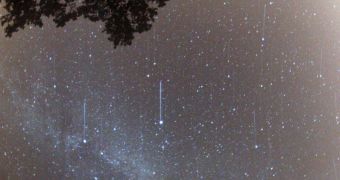As many have probably read already, in a couple of days there will be a rare total eclipse of the moon, which will provide an also rare opportunity to see a December meteor shower that usually hardly gets noticed.
Normally, December is the month when, if you can face the cold and you have clear skies, you can see the Geminids, but if you're passionate about 'falling stars', Christmas is early for you this year – thanks to the total eclipse of the moon, the December Ursids should be visible too!
The peak of this meteor display is usually on the night of December 22 to December 23, and since the eclipse is the night before, you should be able to get a glimpse at the Ursid meteor shower.
The Ursid meteor shower occurs at the same time as the winter solstice, and those who can see it best are polar bears since they come from near the celestial north pole.
Unlike the Geminids, that can produce up to 120 meteors an hour, the rate of the Ursids usually is just a fraction of that – normally they produce about a dozen meteors an hour at their peak.
They are actually dusty debris shed by the periodic comet Tuttle 8P/Tuttle, that circles the sun in a 13.6-year orbit and which was last seen in early 2008, SPACE.com reports.
Sometimes, when the Earth interacts with a dense, narrow stream of particles shed by this comet, the show given by the Ursids is far more spectacular, with dozens of meteors per hour, but this year, astronomers say that this will not happen.
Still, thanks to the lunar eclipse, skywatchers not living at the North Pole might actually see a meteor or two!
The Ursids are called this way because they look like they come from near the bright orange star Kochab, in the constellation of Ursa Minor (the Little Bear).
There are some people that call these meteors the Umids, but this is simply an unsuccessful attempt to make clear that they originate from the direction of Ursa Minor, not Ursa Major.
So, if you prepare yourself well for the cold nights, you could witness two rare and major events: the total lunar eclipse followed by the Ursids.

 14 DAY TRIAL //
14 DAY TRIAL //